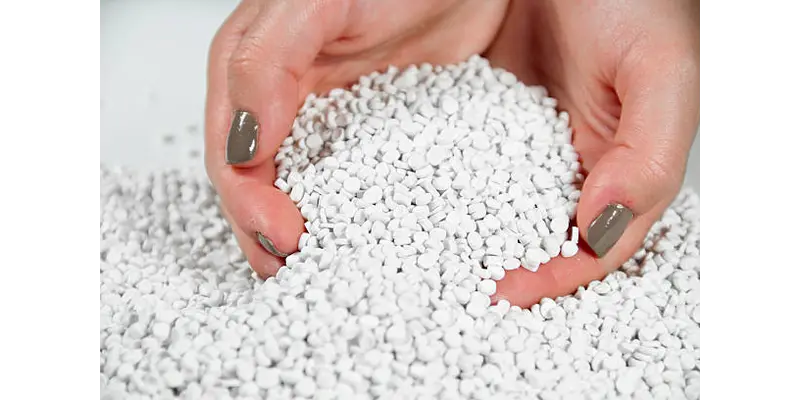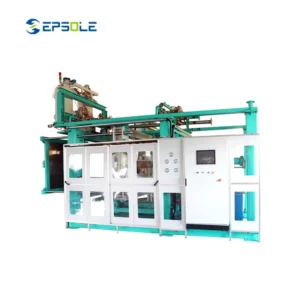If you ever wondered about the fluffy white stuff used to pack your take-out food or insulate your home, you’re not alone.
That’s expanded polystyrene (EPS) we’re talking about, a lightweight yet sturdy material that has become a household name. But, have you ever wondered how it’s made? Let’s dive into the fascinating world of EPS production.
What Is Expanded Polystyrene

Expanded Polystyrene, or EPS, is a type of plastic foam widely used for packaging, insulation, and various other applications. Its unique properties – lightweight, affordable, and excellent insulation – make it a popular choice for manufacturers and consumers alike.
History of EPS
EPS has a rich history dating back to the 1940s. The first commercial production of EPS started in the United States, with the material being used for a variety of applications, particularly for packaging delicate items. Today, EPS is produced all over the world and plays a significant role in various industries.
How is Expanded Polystyrene Manufactured

Here are the steps of the eps manufacturing process in the following
Step 1: Styrene Monomer Production
Before we delve into the creation of Expanded Polystyrene (EPS), let’s take a step back and discuss the production of the primary raw material: Styrene monomer.
Styrene monomer is a colorless, liquid hydrocarbon derived from petroleum. It is produced through the dehydrogenation of ethylbenzene, a process that involves removing hydrogen atoms and producing styrene monomer and hydrogen gas.
Step 2: EPS Beads Preparation
The styrene monomer is then converted into solidified beads through a polymerization process, which involves heating the styrene monomer along with a free radical initiator like benzoyl peroxide. As the reaction progresses, solid polystyrene beads are produced. These beads serve as the base for creating EPS.
Step 3: Foaming and Expanding
The transformation of the solid polystyrene beads into EPS involves the addition of expanders and heat. The expanding process creates the unique cell structure responsible for EPS’s lightweight yet strong properties.
Here are two different methods to expand polystyrene material.
Method 1. Chemical Expansion
In chemical expansion, the polystyrene beads are mixed with a blow agent such as pentane or isobutane. As these expanders evaporate, they produce bubbles within the beads, expanding them and creating a dense network of interconnected cells.
Method 2. Mechanical Expansion
Mechanical expansion involves forcing steam into the hot, pre-expanded beads. The steam creates additional cells within the pre-expanded beads, further expanding the material. After expansion, the EPS is cooled, cut, and shaped as needed.
Step 4: Shaping and Cutting
EPS can be formed into various shapes through processes such as injection molding or compression molding, where the hot, pre-expanded beads are melted and transformed into the desired shape. Once the EPS has cooled and hardened, it is cut and trimmed to the required size and appearance using such techniques as sawing, milling, or die-cutting.
Step 5: Additives
Additives are often employed during EPS manufacturing to enhance its properties. For example, flame retardants can be added to improve EPS’s fire resistance, while blow agents are essential for the expansion process itself.
These steps provide a high-level overview of the process involved in the production of Expanded Polystyrene. In the following sections, we’ll delve deeper into various aspects of EPS, including applications, environmental impact, and sustainable alternatives. Stay tuned!
Shaping and Cutting of EPS
Injection Molding
Injection molding is a common method for producing EPS products with complex shapes. The pre-expanded EPS beads are melted and injected into a mold, where they cool and harden into the desired shape.
Cutting and Trimming
After the EPS has been molded, it is cut and trimmed to the required size and appearance. This can be done using a variety of methods, such as sawing, milling, or die-cutting.
The Role of Additives in EPS
Flame Retardants
To improve the fire resistance of EPS, flame retardants are often added during the manufacturing process. These materials work by slowing down the spread of fire and reducing the amount of heat released when EPS burns.
Blow Agents
Blow agents, such as the ones mentioned earlier, are crucial for the expansion of EPS. They help create the microcellular structure that gives EPS its unique properties.
Conclusion
Expanded polystyrene, or EPS, is a fascinating material with a wide range of applications. From food packaging to insulation, EPS plays a crucial role in many industries. Understanding its manufacturing process, properties, and potential environmental concerns is essential for responsible consumption and production.
FAQs
What is EPS and where is it used?
EPS is a lightweight, closed-cellfoam plastic commonly used as packaging for fragile items, as insulation in buildings, and in various other applications, such as flotation devices, protective cushioning, and craft materials.
What are the advantages of using EPS?
EPS offers numerous advantages, including excellent insulation, lightweight yet sturdy properties, water-resistance, resistance to moisture, and high load-bearing capacity.
What are some environmental concerns with EPS?
Some environmental concerns associated with EPS include waste management due to its low recycling rate, carbon footprint from production and disposal, and potential release of harmful substances during incineration.
What alternatives exist to EPS for food packaging?
Alternatives to EPS for food packaging include pulp molded fiber, biodegradable plastics, and recycled cardboard.
What are some common uses of EPS in construction?
Common uses of EPS in construction include building insulation, cladding, roofing, and floatation devices for buildings during construction. EPS is also used in the production of decorative moldings, paneling, and wall partitions.



